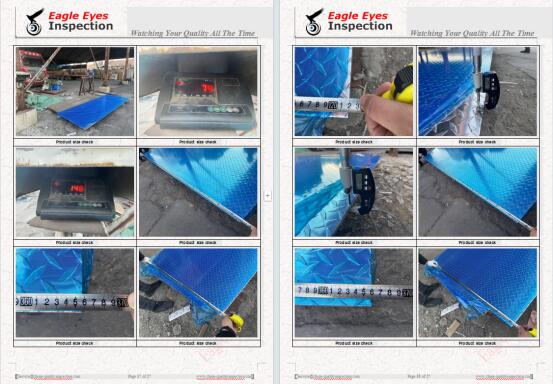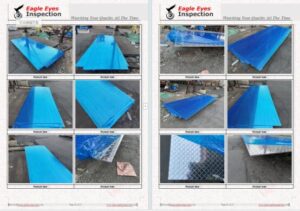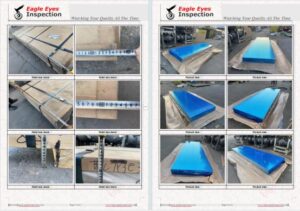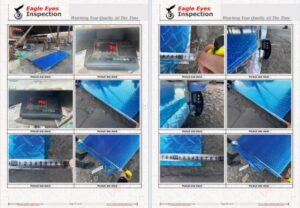
Aluminum Plate Inspection Process1. Pre-Inspection Preparation
Review Requirements:
Confirm specifications (thickness, alloy, surface treatment, tolerances, etc.) against the contract or technical agreement.
Reference standards: GB/T (China), ASTM (USA), EN (Europe), or customer-specific requirements.
Sampling Plan:
Follow AQL (Acceptable Quality Level) standards (e.g., AQL 1.0/2.5 per ISO 2859-1 or customer request).
Tools Preparation:
Micrometer, caliper, hardness tester, gloss meter, coating thickness gauge, etc.
2. Visual Inspection
Surface Quality:
Check for scratches, dents, oxidation spots, color differences, peeling, or bubbles.
Verify surface treatment (anodizing, painting, brushing, etc.) for uniformity and adhesion.
Edge Condition:
Ensure smooth edges without burrs or cracks.
Cleanliness:
Free from oil stains, dust, or chemical residues.

3. Dimensional Inspection
Thickness:
Measure at multiple points (corners + center) using a micrometer (±0.1mm tolerance).
Width/Length:
Verify with a tape measure or caliper; check diagonal deviation (e.g., ≤2mm/m).
Flatness:
Place on a flat surface and check warping with a feeler gauge (e.g., ≤1mm/m).


4. Material & Performance Testing
Alloy Verification:
Check material certificate (e.g., 6061, 5052); use a spectrometer if needed.
Mechanical Properties:
Hardness (Webster), tensile strength, elongation (third-party test reports).
Coating Tests (if applicable):
Adhesion (cross-cut test), coating thickness (dry film thickness gauge).
5. Packaging & Marking
Packaging Integrity:
Ensure protective film/paper, foam separators, and pallet/wooden crate stability.
Labeling:
Check batch number, alloy grade, dimensions, and handling instructions.



